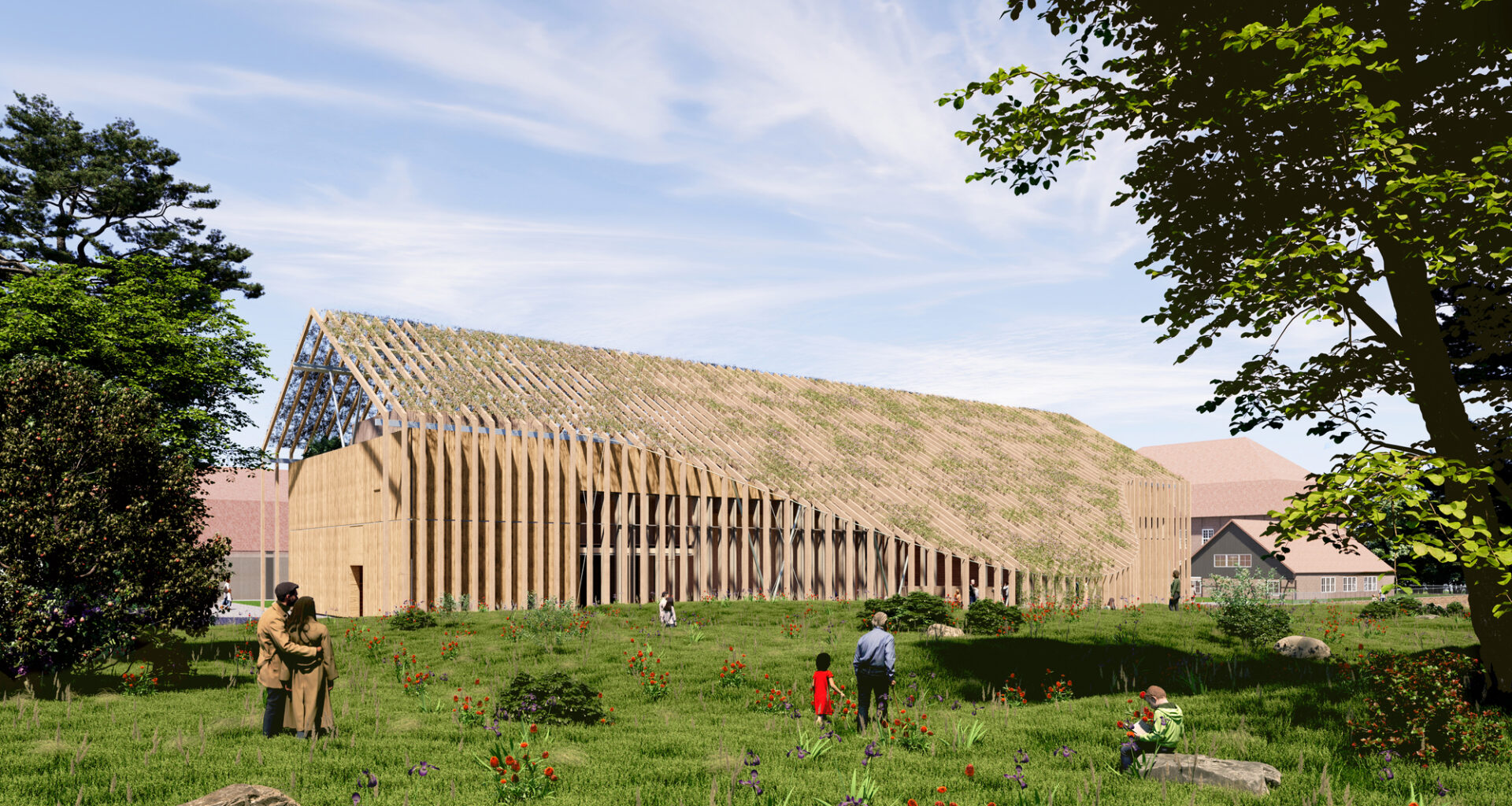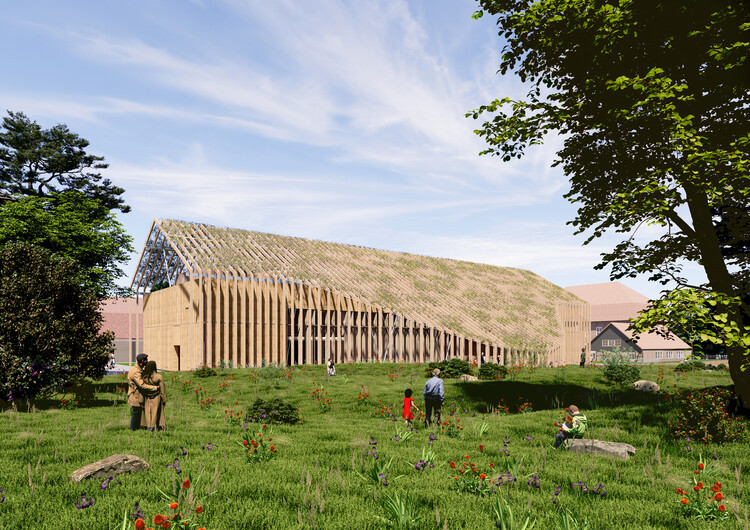 Museum Erhardt by Kéré Architecture. Exterior garden view. Render . Image Courtesy of Kéré Architecture
Museum Erhardt by Kéré Architecture. Exterior garden view. Render . Image Courtesy of Kéré Architecture
Share
Or
https://www.archdaily.com/1035447/kere-architecture-breaks-ground-on-museum-ehrhardt-museum-in-pluschow-germany
Construction has officially begun on the Museum Ehrhardt in Plüschow, northeast Germany, marking the first cultural project in Germany by Francis Kéré and his firm Kéré Architecture, as well as their first museum building in Europe. Developed in cooperation with HK Architekten and Hermann Kaufmann + Partner ZT GmbH, the 1,400-square-meter museum will be dedicated to photography and contemporary art. The initiative was launched by Dr. Jens Ehrhardt, son of the artist Alfred Ehrhardt (1901–1984), together with his wife Elke Weicht-Ehrhardt, to honor the painter, photographer, and filmmaker who was a leading figure of Germany’s New Objectivity movement. The museum will stand near the Baltic Sea, adjacent to Schloss Plüschow, an artist residency and gallery.
 Museum Erhardt by Kéré Architecture. Entrance view. Render . Image Courtesy of Kéré Architecture
Museum Erhardt by Kéré Architecture. Entrance view. Render . Image Courtesy of Kéré Architecture
The architecture of Museum Ehrhardt reflects a contextual and craft-oriented approach rooted in regional materials and techniques. The design combines wood and clay construction, with a wooden pergola that echoes traditional gable forms and a roof garden that visually anchors the building within its landscape. A central 80-meter-long rammed earth wall defines the exhibition spaces and regulates indoor conditions through its thermal mass, maintaining humidity and temperature balance. Above it, a timber structure developed with HK Architekten provides a lightweight framework engineered for dismantling and reuse, underscoring the project’s focus on material efficiency and long-term sustainability.
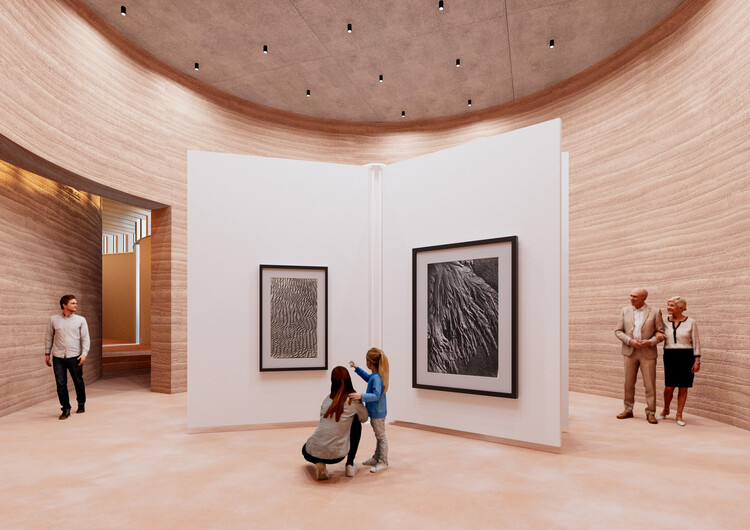 Museum Erhardt by Kéré Architecture. Interior view of the exhibition space. Render. Image Courtesy of Kéré Architecture
Museum Erhardt by Kéré Architecture. Interior view of the exhibition space. Render. Image Courtesy of Kéré Architecture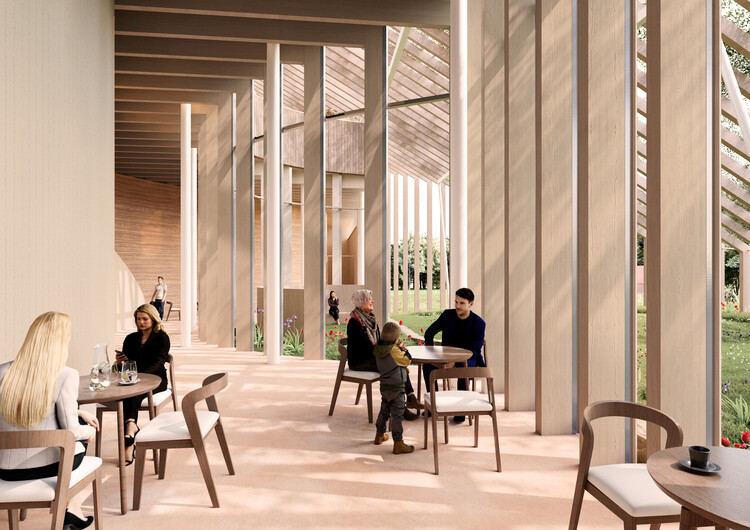 Museum Erhardt by Kéré Architecture. Café interior. Render . Image Courtesy of Kéré Architecture
Museum Erhardt by Kéré Architecture. Café interior. Render . Image Courtesy of Kéré Architecture
The surrounding landscape is integral to the museum’s design concept. Outdoor spaces include a roof biotope and a ground-level garden extending from the museum café, creating areas for public use and environmental integration. The terrain is shaped to collect rainwater for irrigation, reducing dependence on external resources. Covering a total area of 6,871 square meters, including 3,973 square meters of garden, the building’s design emphasizes ecological performance, durability, and a clear relationship with its setting. The Museum Ehrhardt is scheduled for completion and opening at the end of 2027.
Related Article Lina Ghotmeh on Memory, Museums, and the Archaeology of the Future 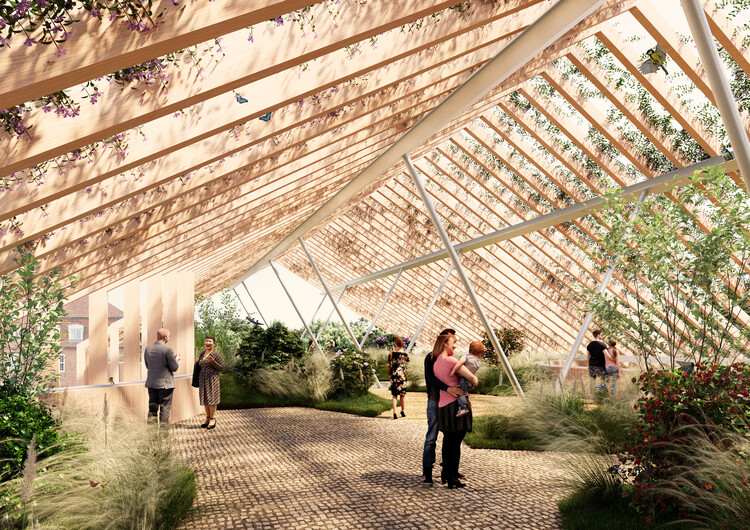 Museum Erhardt by Kéré Architecture. View of the rooftop garden. Render . Image Courtesy of Kéré Architecture
Museum Erhardt by Kéré Architecture. View of the rooftop garden. Render . Image Courtesy of Kéré Architecture
In other recent news, construction has begun on the Innovation Park Artificial Intelligence (IPAI) Campus in Heilbronn, Germany, designed by Dutch architecture firm MVRDV. The 30-hectare campus is envisioned as an international hub for more than 5,000 professionals dedicated to developing innovative and responsible AI solutions. Meanwhile, Zaha Hadid Architects announced a major milestone for the Danjiang Bridge in Taipei, Taiwan: the installation of the final segment of the bridge’s steel decking, which connects the east and west banks of the Tamsui River estuary for the first time. In Busan, South Korea, OMA recently unveiled the design for the Hillside Redevelopment Project, a proposal that addresses urban transformation on the city’s steep slopes.

